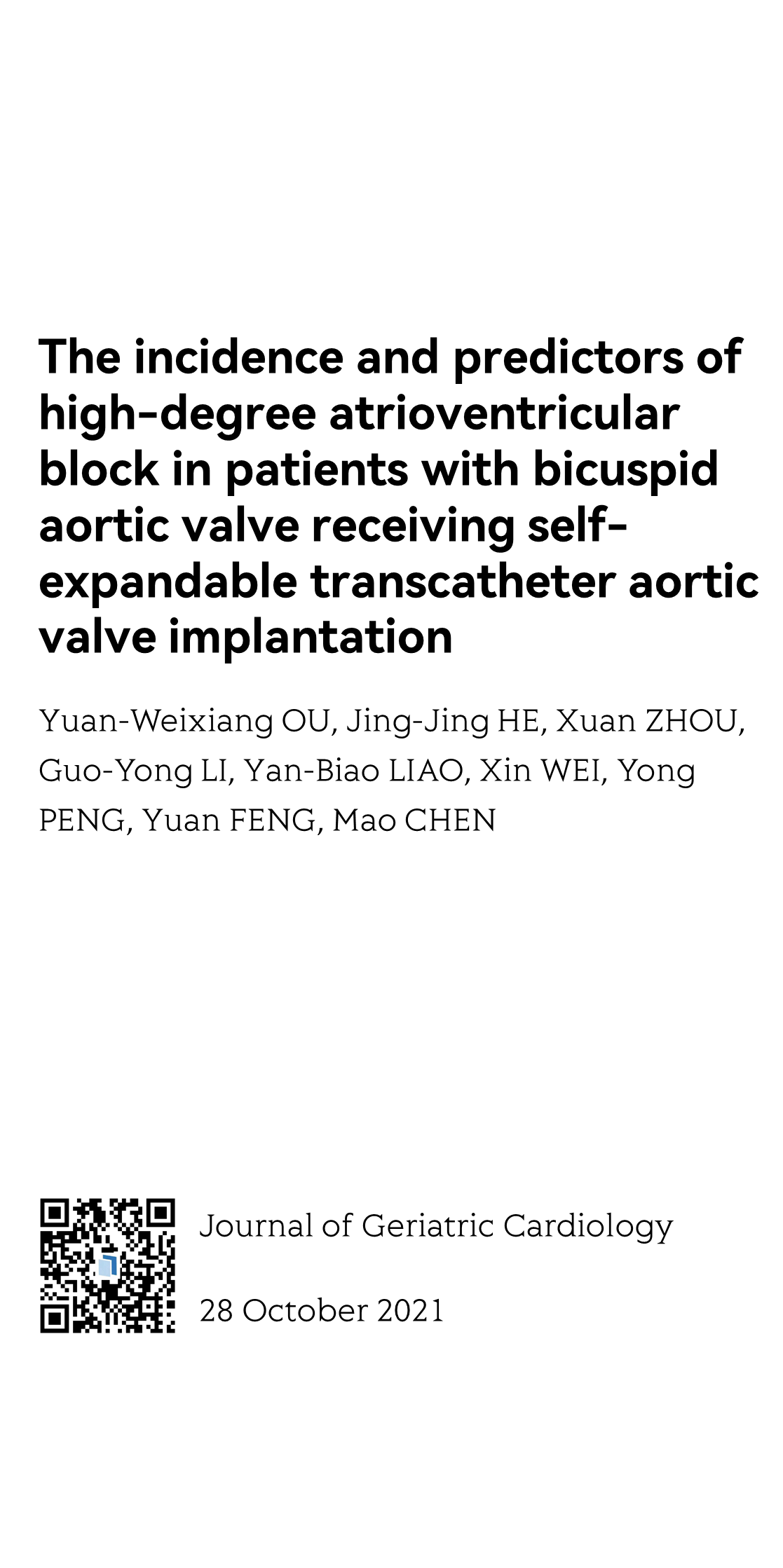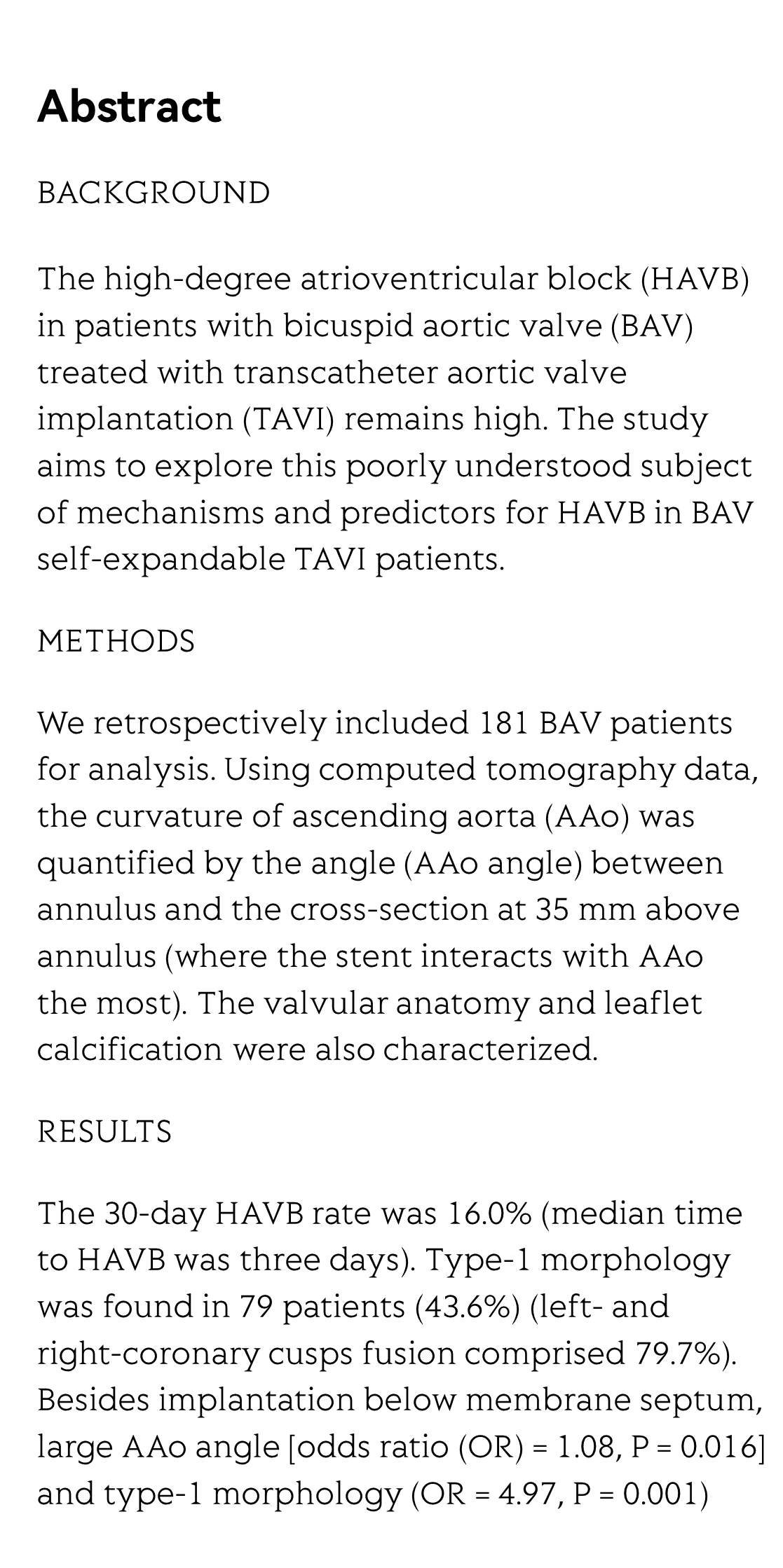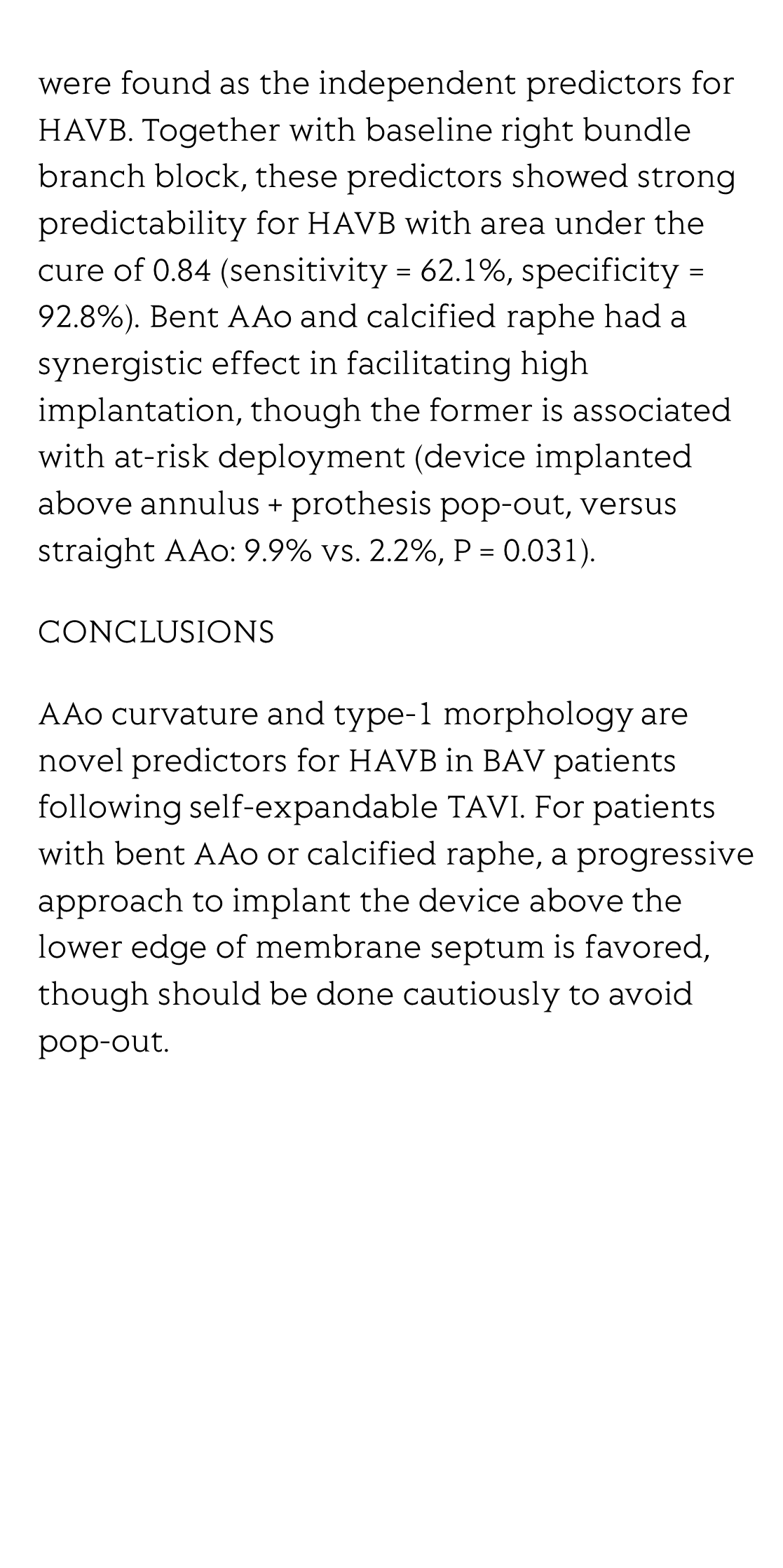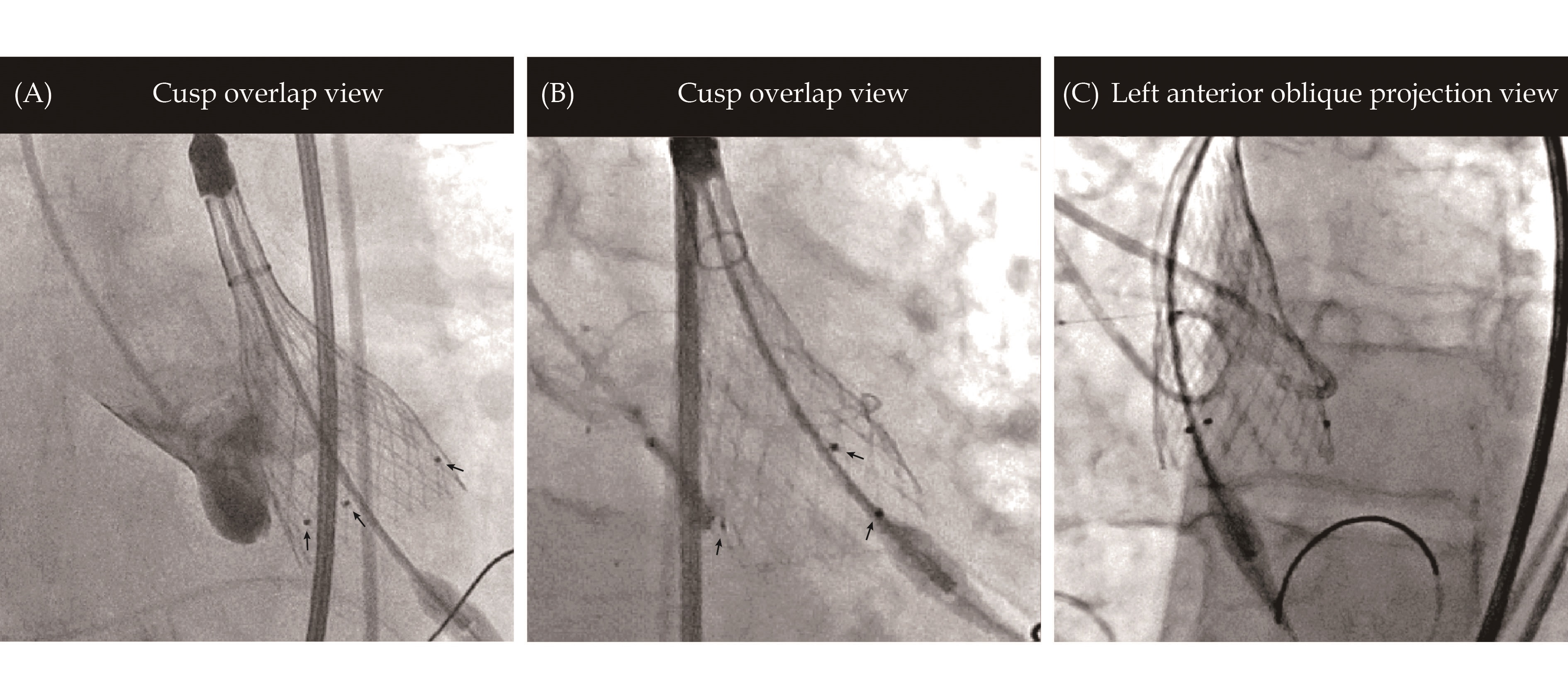The incidence and predictors of high-degree atrioventricular block in patients with bicuspid aortic valve receiving self-expandable transcatheter aortic valve implantation
经导管自膨式主动脉瓣植入术的二叶式主动脉瓣患者发生高度房室传导阻滞的发生率及预测因素
自己拡張型経カテーテル大動脈弁移植を受けた二尖大動脈弁患者における高度房室ブロックの発生率と予測因子
자가 확장형 경동맥 판막 이식술을 받은 이첨 대동맥판막 환자에서 고도 방실 차단의 발생률과 예측인자
Incidencia y predictores de bloqueo auriculoventricular de alto grado en pacientes con válvula aórtica bicúspide que reciben un implante percutáneo de válvula aórtica autoexpandible
L'incidence et les facteurs prédictifs du bloc auriculo-ventriculaire de haut degré chez les patients présentant une valve aortique bicuspide recevant une implantation de valve aortique transcathéter auto-extensible
Частота и предикторы атриовентрикулярной блокады высокой степени у пациентов с двустворчатым аортальным клапаном, которым имплантировали саморасширяющийся транскатетерный аортальный клапан
自己拡張型経カテーテル大動脈弁移植を受けた二尖大動脈弁患者における高度房室ブロックの発生率と予測因子
자가 확장형 경동맥 판막 이식술을 받은 이첨 대동맥판막 환자에서 고도 방실 차단의 발생률과 예측인자
Incidencia y predictores de bloqueo auriculoventricular de alto grado en pacientes con válvula aórtica bicúspide que reciben un implante percutáneo de válvula aórtica autoexpandible
L'incidence et les facteurs prédictifs du bloc auriculo-ventriculaire de haut degré chez les patients présentant une valve aortique bicuspide recevant une implantation de valve aortique transcathéter auto-extensible
Частота и предикторы атриовентрикулярной блокады высокой степени у пациентов с двустворчатым аортальным клапаном, которым имплантировали саморасширяющийся транскатетерный аортальный клапан




Reviews and Discussions
